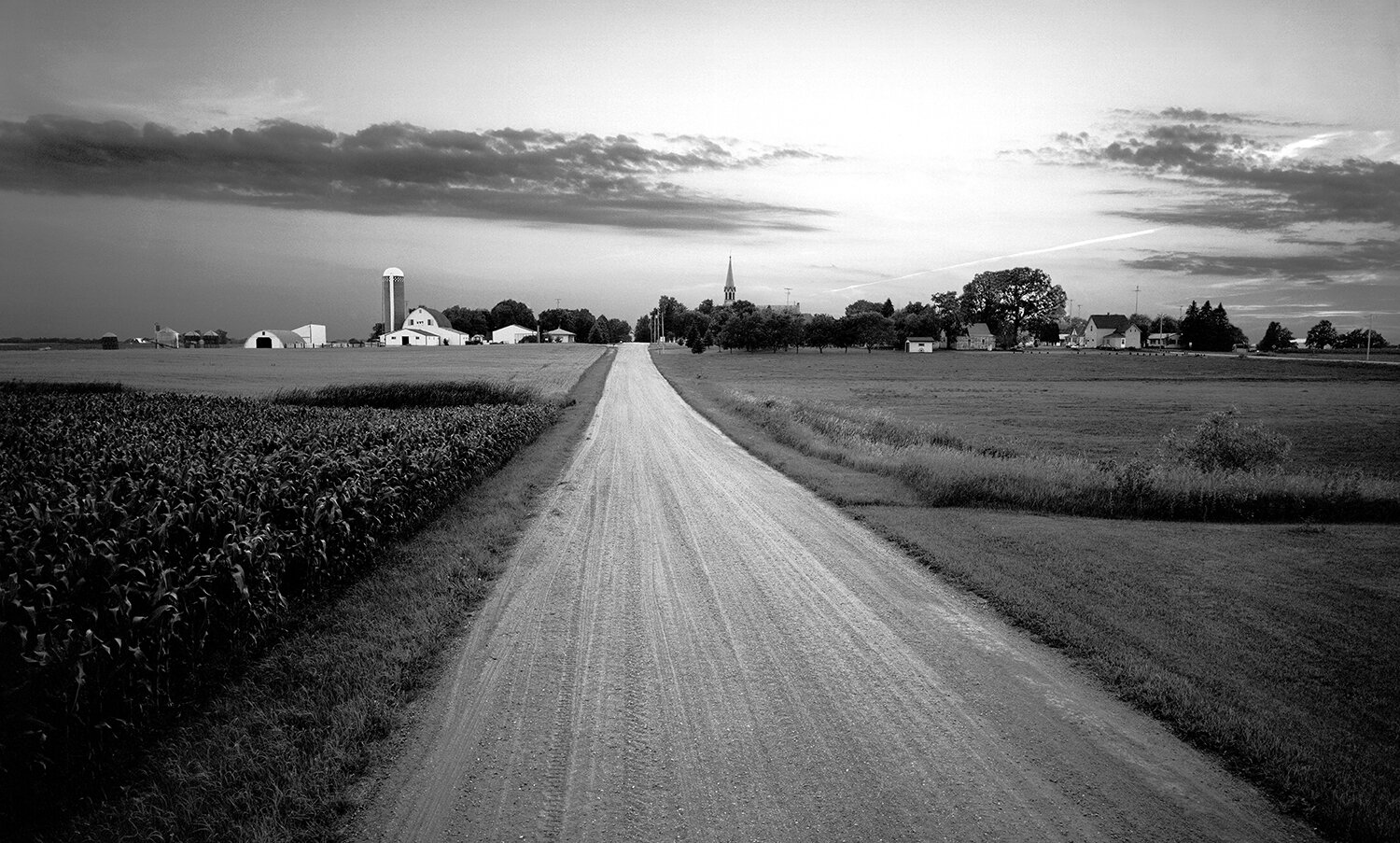
Into the Heartland
“Someone once asked me, “Is there really a Lake Wobegon or what?”
“Well I’ll tell you” I said, “if you shuttle back and forth through central Minnesota on I-94,
stopping only for gas or a quick burger…well no it doesn’t exist.”
“I had spent over a decade as a newspaper photographer for the Minneapolis StarTribune. Much of my energy was spent looking for daily images the paper could run. That’s what I loved, driving around looking for images, finding something to take back and often seeing them on the front page the next morning. So years later, when I had moved to Washington, D.C. as a photo editor at National Geographic Magazine, I got the assignment with Garrison Keillor to try and validate his mythical town of Lake Wobegon. Well, it was like coming home for me after years of far-flung assignments. This Wobegon story involved a number of months working the area just northwest of St. Cloud, Minnesota, the region that gave inspiration to Keillor’s mythical town. I lived in a small motel and spent my days photographing in the rural communities. The result was a rare National Geographic Magazine article shot in black & white, followed by a book published by Viking Studio Press.
Most images were shot on a 4 x 5” view camera. I had a limited number of film holders and each night was spent unloading and loading film in a cramped darkened bathroom. I chose black & white which is my favorite for documentary work. Why? Well that is a much longer discussion. Here is small sampling of the work from In Search of Lake Wobegon.” Richard Olsenius
Why Lake Wobegon?
Centuries from now when archaeologists and historians find references to the Midwest, they will consistently come across a mention of the town and lake of Wobegon in hundreds of thousands of books, and newspaper articles, and magazine stories. Yet they will scour through the maps and atlases, they will find no trace of this famous place called Wobegon. They will find St. Cloud and Meier Grove, Sauk Center, Holdingford, Freeport, Albany, Avon, Melrose and others…but they will not find Lake Wobegon. Is this our modern day Atlantis?
Holdingford Homecoming Court
So why undertake such a story. Well, the rationale behind the magazine article was for Keillor and myself to go back to the area where Garrison derived many of his characters and impressions, some 30 years ago and see if there were any remnants of this society left. It is an area slightly west and north of St. Cloud Minnesota. My goal was to see if there was in fact any truth to this mythology. To put a partial face on this mythological land called Lake Wobegon.
For me the challenge was illustrate an idea, yet not ruin this wonderful world that exists in so many of our minds. To define gently this place or idea for it’s spirit, it’s landscape, it’s people, it’s weather…and do this all somewhere near and central to Minnesota.
But not surprisingly these images, with their feelings or moments are not unique to the mythical Lake Wobegon or Central Minnesota. We all know Lake Wobegon is really a part of everyone’s hometown… or at least what we fondly remember but haven’t set foot in for many years.
So here I am telling you about a wonderful assignment that was like a dream, to be able to return to my home ground with camera in hand and to travel in and explore, simply looking for moments we all know exist but are difficult to find. I am forever grateful to the people of my home state who shared these brief moments with me. But most importantly, I am grateful to have been raised in this central part of the United States we call the Midwest
by Richard Olsenius
Malcolm Jones, reviewing In Search of Lake Wobegon for The New York Times, wrote, "the austerely affectionate black-and-white photographs of Richard Olsenius with accompanying text by Keillor, this elegant photo album showcases the real Minnesota towns, farmland and prairies that helped inspire Keillor's imaginary town.”





